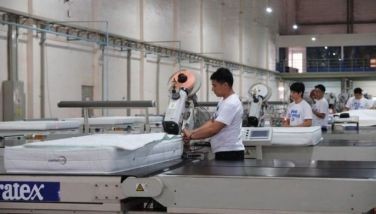AI: Boon or bane?

There have been dire predictions resulting from the coming of the AI revolution. Millions of people are projected to lose their jobs. According to the International Monetary Fund (IMF), at least 40 percent of employees will be affected. It has even projected that there will be an increase in income inequality.
That is why the IMF is encouraging governments to prepare a program for labor retraining so they can cope with the massive unemployment expected to result from the AI revolution. At the same time, government should also prepare for the expected increase in income inequality.
Not all predictions however, have doomsday scenarios. One especially interesting article has a very optimistic outlook. This is written by Michael Spence, winner of the 2001 Nobel Prize in economics and presently a senior fellow at the Hoover Institution at Stanford University. He claims that by the next decade, the shift to AI will actually become the leading cause for global prosperity. If properly harnessed, AI could reverse the long-term declines in productivity growth happening in the world today.
This economic revolution, however, needs to refocus the debates on the danger that AI poses. There must be policies that promote technologies that augment human capabilities rather than simply replace them. One major obstacle that must be erased is the present mindset towards artificial intelligence that sees this as a threat to the world population. According to Spence: “Ultimately, AI technologies must be embraced as tools that can enhance rather than undermine human potential and ingenuity.”
In many countries today, growth is slowing and remains weak because of inflation that central banks are now fighting. Productivity growth has been slowing since 2005. In countries that account for over 75 percent of global economic output, aging populations have limited the growth of the labor supply.
Major employment sectors such as government, health care, retail, hospitality and construction have critical shortages of workers. In fact, in some countries such as China, Italy, Japan and South Korea, labor forces are actually shrinking.
Geopolitical tensions have also led many countries to diversify their supply chain even with the result of increasing costs. Conflict between China and the west has ended the era of building global supply chains on the basis of efficiency and cost reduction.
According to Spence, “…the global economy will continue to be held back by slow growth and reduced labor supply, the persistent threat of inflation, higher interest rates, shrinking public investments and elevated costs of capital for the foreseeable future.”
In the short term, the Philippines will actually benefit from the shrinkage of labor forces. The demand for Filipino overseas workers will continue and may even increase. However, any major downturn in the global economy will ultimately affect our own fragile economy.
In the foreseeable future, AI could cause major improvements in efficiency as well as help with complex human tasks. According to the McKinsey Global Institutes June 2023 report, AI has the potential to automate activities that currently take up 60-70 percent of workers’ time. AI could also achieve wholesale automation of many sectors.
This massive increase in productivity could trigger large-scale job losses unless governments are prepared with massive programs of retraining or redirecting the economy.
The largest challenge of AI on the economy involving about two-thirds of present occupations will be to change the way that work is performed. According to Spence, occupations in fields affected by AI will not go away. However, they will require new skills as people do their jobs in collaboration with capable machines.
The coming AI revolution will require a two-sided approach. The first is anticipating and possibly preventing the misuse or harmful effects of this new technology. The second is by promoting the uses of AI in areas that most benefit people, increase economic growth and help society tackle its most pressing challenges. This can be done by making AI more accessible and encouraging its applications in areas that lead to productivity growth.
At present, the common impression of AI is that it should be controlled to prevent harm and damage and even global disruptions. Even scientists have warned of the risks of misuse by people with bad intentions. For example, there are warnings that AI could be used for unconstrained military applications.
Policies are definitely needed to ensure that AI complements, rather than replaces, human labor. Another priority should be to encourage the widest possible spread of AI technologies across the economy. Even now, advanced technologies have become the monopolies of a technical elite and the lower classes have no access.
Spence writes: “The development of AI has reached a crucial juncture.” This technology can either bring human and economic gains or cause very real harms to the human race.”
Spence reminds us, “For the most likely risk that AI poses to the world today is not that it will produce some kind of civilizational catastrophe or a huge negative shock to employment, rather that it is without effective guidance, AI innovations could be developed and implemented in ways that magnify current economic disparities rather than bring about a strengthened global economy for generations to come.”
* * *
Email: elfrencruz@gmail.com
- Latest
- Trending



















